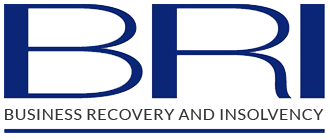A Creditors Voluntary Arrangement (or “CVA” for short) is a legally binding agreement between a company and its creditors. It is a process whereby a company settles, from future profits, some or all of its debts over a longer period of time, ensuring that the Company can continue to trade with a view to making its way out financial hardship.
A CVA is implemented under the supervision of an Insolvency Practitioner, like BRI, but the existing management are able to remain in control of the company. It can be a great tool to restructure the business and create a better business strategy going forward.
If you want to discuss the CVS process and how it could relate to your companies situation, contact our team today.
What is the CVA Process?
At BRI, we help businesses navigate the CVA process, we have a team of practitioners ready to work with you. Below is a brief overview of the CVA Process:
- Proposal Preparation – The Board instruct Insolvency Practitioners to work with them to prepare a CVA proposal. The CVA proposal outlines how the company will pay its debts and restructure its finances. It must be supported by detailed cash flow forecasts which show the viability of the business.
- Lenders are Consulted – Any secured lenders are consulted about the proposals, as secured creditors will not be bound by the arrangement.
- Proposal Review – The Insolvency Practitioner (“IP”) acting as the Nominee, reviews the proposal and ensures that it is fair and achievable. A Nominee’s Report is prepared by the IP confirming this.
- Final Proposal Filed and Distributed – The final proposal and report is then filed at court and copies are sent to the company’s creditors.
- Shareholders Meeting – Not less than 14 days from delivery of the proposals, a shareholders meeting and decision of creditors is held inviting them to consider the proposal.
- Vote – At the shareholders meeting, a majority of at least 50% must vote in favour of the proposals.
- Secondary Vote if Required – 75% or more of the total value of creditors must approve the proposal for the CVA to commence. If there are connected creditors, a second vote is held whereby at least 50% of unconnected creditors must approve.
- Approval and Binding Agreement – Once approved, the agreement is binding on all unsecured creditors entitled to vote on the proposals, including any creditors who voted against it. This means that it stops unsecured creditors taking legal action against the company in respect of the CVA debts.
What are the Advantages of a CVA?
There are several Advantages of a Creditors Voluntary Arrangement. Our clients often find the following;
Continuation and Brand Preservation
A CVA allows the company to continue to trade which means that jobs are preserved along with the brand reputation. One of the main advantages of a CVA is that it is not publicly advertised so the business’ reputation can be protected.
Control and Flexibility
As mentioned above, the directors retain control of the company throughout the CVA process, allowing them to manage the business. Furthermore, the proposals can be tailored to the Company’s specific circumstances, providing more flexibility than other insolvency procedures.
Investigation
Unlike in liquidation, a CVA does not involve investigation into the directors’ conduct.
Debt Forgiveness
A CVA typically involves some debt forgiveness, with any remaining unsecured debt included in the arrangement being written off once the CVA concludes.
Cheaper Fees
The costs of a CVA can be cheaper than alternative insolvency procedures such as Administration and Liquidation.
What are the Disadvantages of a CVA?
Like all financial options and insolvency proceedings, there are some drawbacks to CVAs;
Credit Rating
It should be noted that a CVA negatively impacts the company’s credit rating, making it more difficult to obtain credit from new suppliers.
Long Duration
Furthermore, a CVA lasts several years (typically between 3-5 years) and the company must ensure that it can meet its monthly payment obligations for the duration.
Customer contracts
How customers react to news that company is subject to a voluntary arrangement can be difficult to predict. Where you have customer contracts, it is sensible to consider whether they include any termination clause in the event of a company compromising its debts. This can have material impact on the viability of the business.
Potential for Failure
Should the CVA fail, the creditors are no longer bound so can take action against the company and the company may end up entering another insolvency procedure such as Liquidation or Administration.
What does a CVA means for employees?
Of course, you’re probably thinking about what happens to your employees during the CVA process. In a CVA, the employees are not automatically made redundant as it is likely some or all of the staff will be required for the company to continue trading.
However, it may be appropriate in some circumstances for redundancies to be made as part of a cost cutting measure to ensure the Company’s viability. This is particularly common where, as part of the restructure of the business, some parts are being wound down.
If redundancies are proposed, the company must adhere to the relevant employment law and follow the statutory process.
If you have more questions about your employees and how the CVA process will effect them, please contact our team.
How can BRI help you with you CVA process?
At BRI, we have a wealth of experience in providing advice to Directors considering placing their company into a CVA.
If a CVA is a viable solution for your business, we will work closely with you throughout the whole process – to collate all the information required, assist you in drafting the proposals and seeking a decision from the creditors.
